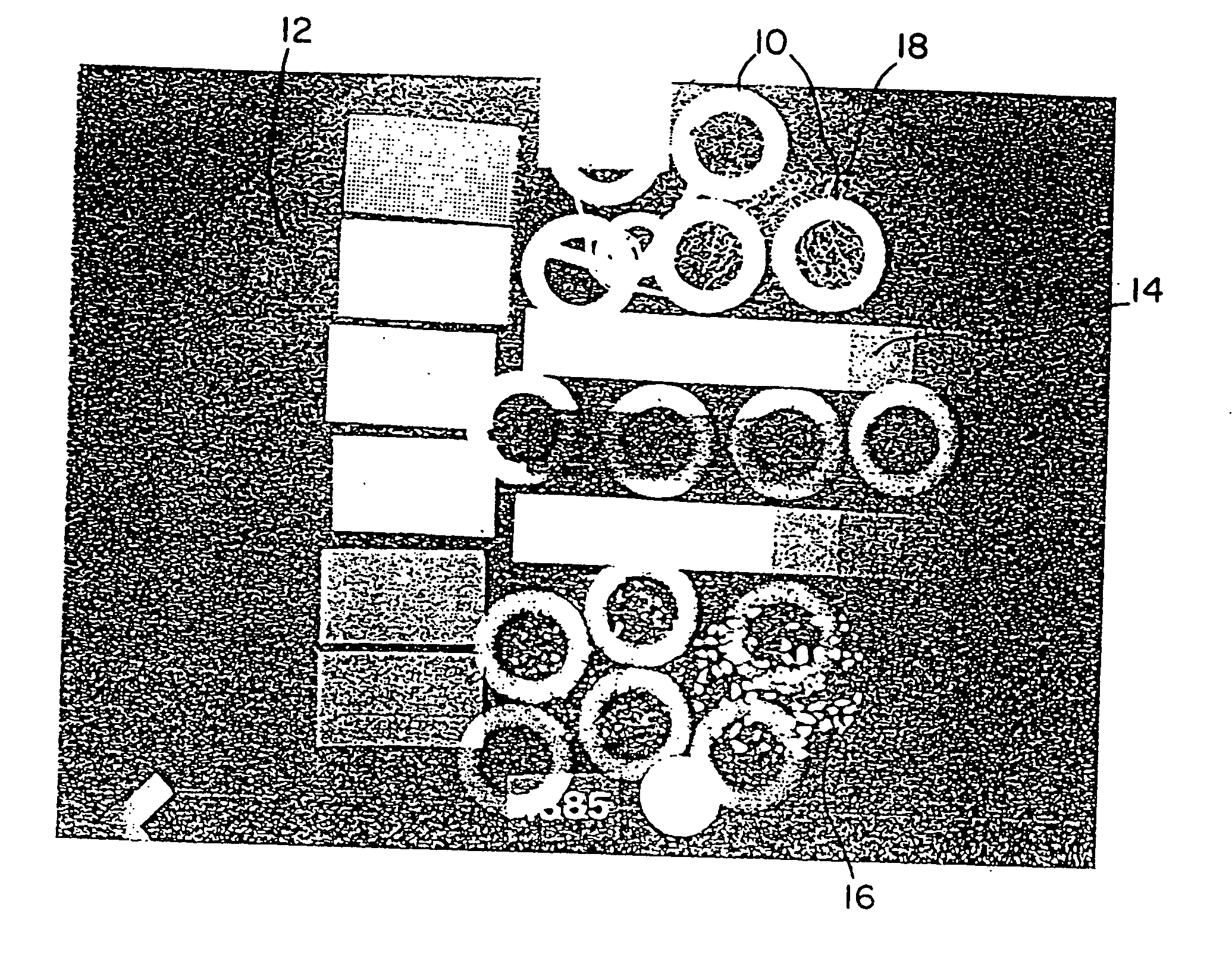Intermediate density marker and a method using such a marker for radiographic examination
a radiographic examination and intermediate density technology, applied in the field of radiography, can solve the problems of metallic markers, ct scanners, and tissue detail that falls within the shadow of markers, and achieve the effect of avoiding the shadow of markers
- Summary
- Abstract
- Description
- Claims
- Application Information
AI Technical Summary
Benefits of technology
Problems solved by technology
Method used
Image
Examples
Embodiment Construction
[0026] The most important factor regarding the detail recorded in a radiographic image is the disparity in light and dark or shadow intensity between adjacent objects. This is called image contrast and refers to the difference in the optical density between areas or objects imaged on a detectors, commonly photographic film. As x-rays pass through a patient, or other objects, they are absorbed, to varying degree, by the materials through which they pass. The principal determinant of contrast is the radiation attenuation property of each material, which is a function of the material's elemental and chemical composition. Materials of higher atomic number and density (weight per volume) have a greater ability to absorb x-rays and reduce or attenuate the beam.
[0027] In the diagnostic x-ray spectrum, for example, bone, rich in calcium, contrasts very well with the surrounding muscle and other soft tissues which have a density equivalent to water. Fatty tissue, which is only 10% less dens...
PUM
 Login to View More
Login to View More Abstract
Description
Claims
Application Information
 Login to View More
Login to View More - R&D
- Intellectual Property
- Life Sciences
- Materials
- Tech Scout
- Unparalleled Data Quality
- Higher Quality Content
- 60% Fewer Hallucinations
Browse by: Latest US Patents, China's latest patents, Technical Efficacy Thesaurus, Application Domain, Technology Topic, Popular Technical Reports.
© 2025 PatSnap. All rights reserved.Legal|Privacy policy|Modern Slavery Act Transparency Statement|Sitemap|About US| Contact US: help@patsnap.com



